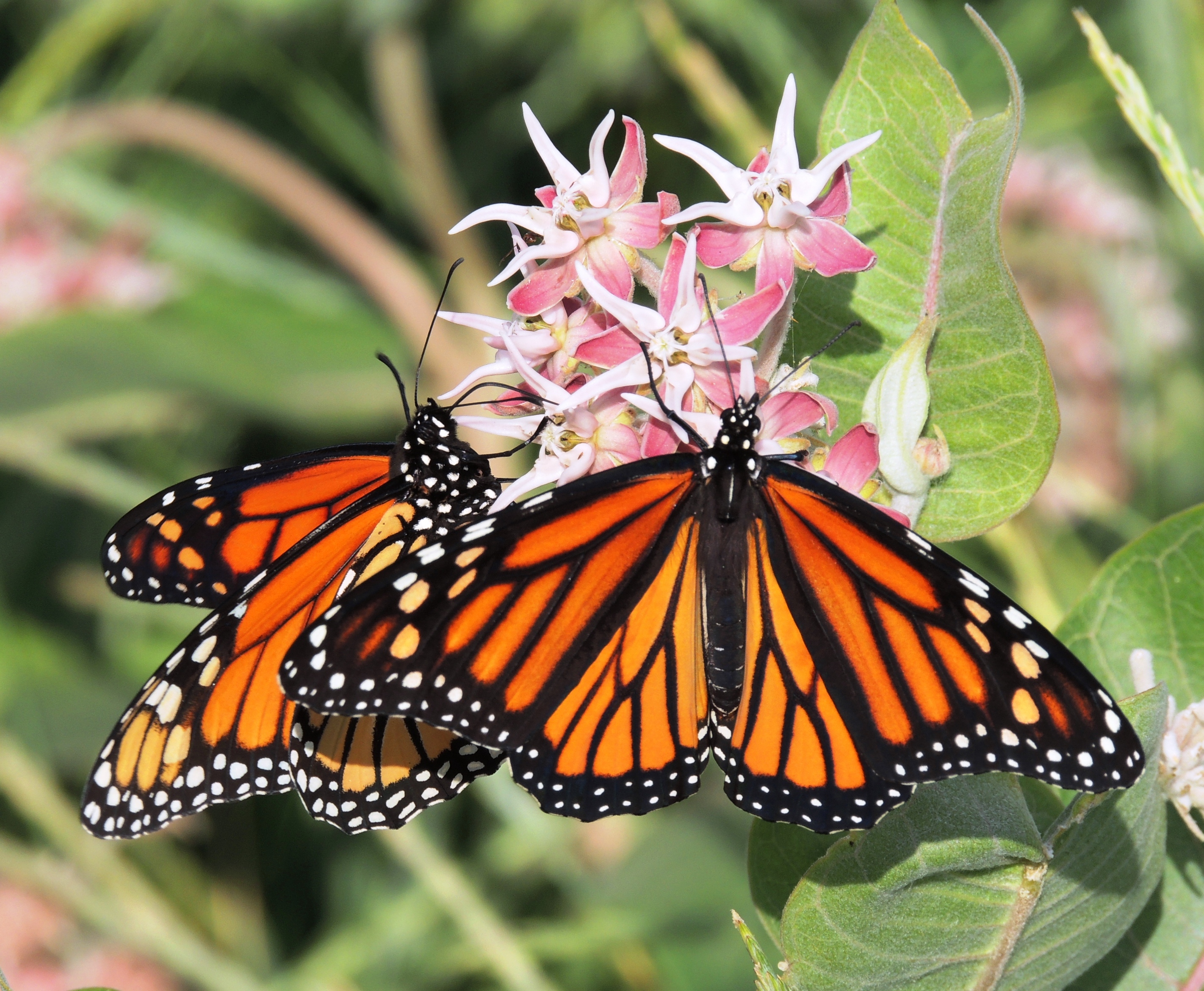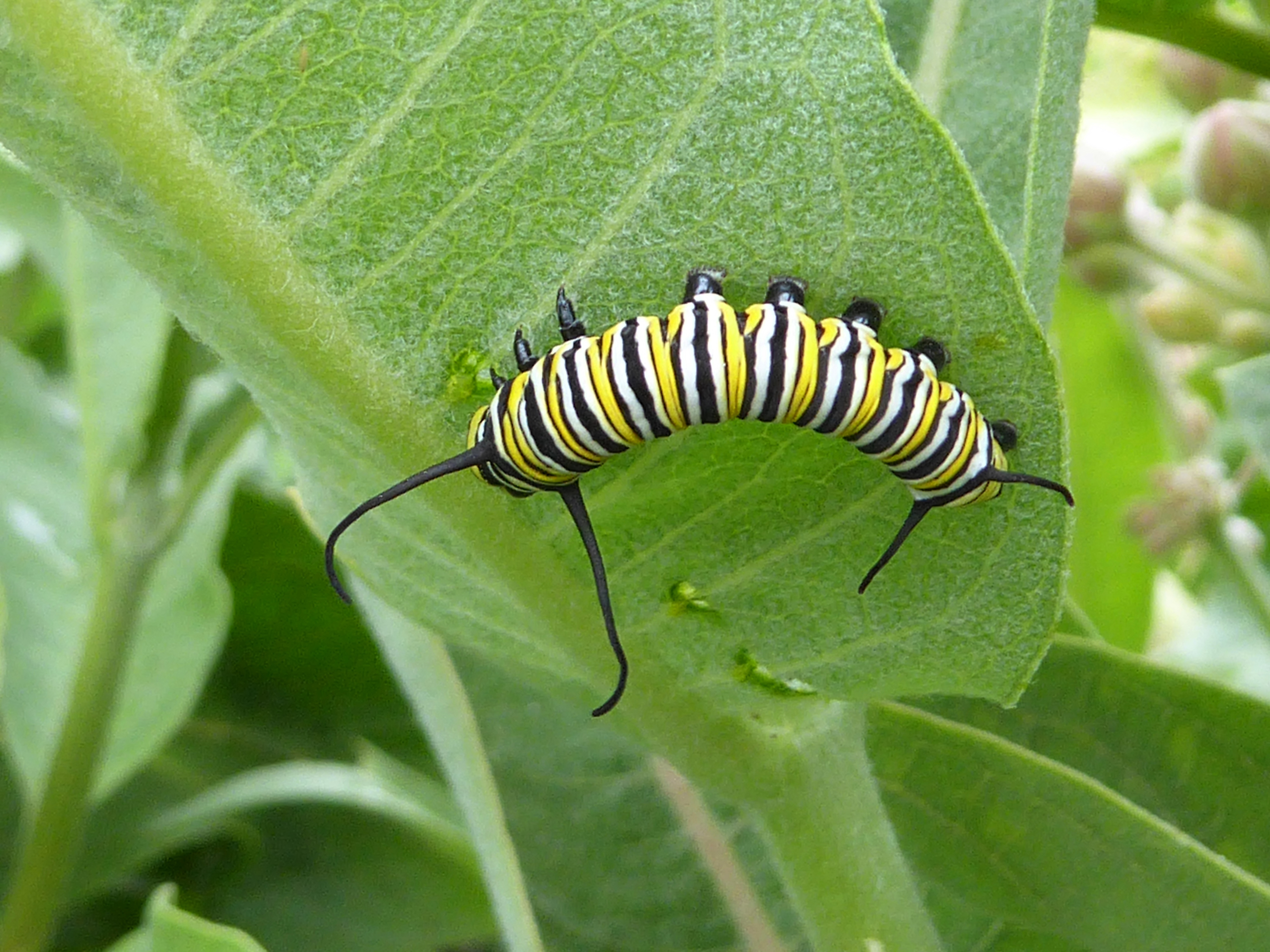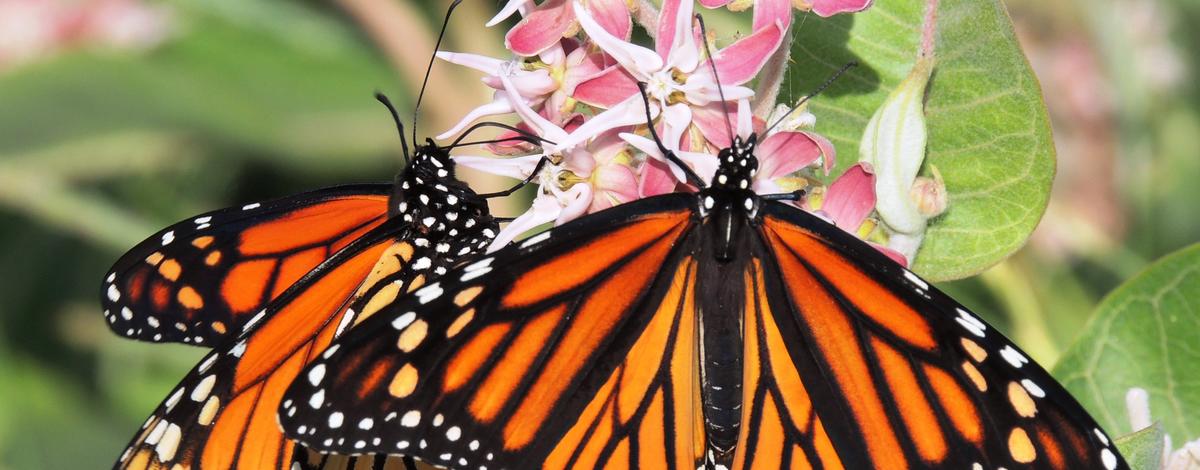Biologists mobilize to address monarch butterfly and milkweed data gaps in Idaho
Few species spark people’s wonder and passion like the monarch butterfly. With its fiery-orange and black pattern and large wingspan, the monarch is among the most recognized of insects in North America. Its life cycle is a complex marvel involving a lengthy migration completed “relay-style” by several generations in a single year. During their summer wanderings, female monarchs lay their eggs on the leaves of milkweeds—the sole food source for their striking yellow, white, and black-striped caterpillars. Milkweeds are the essential links of the chain that connect monarch breeding populations across North America.

Monarch butterflies have made their mark on Idaho as the official State Insect. Idaho is one of 11 western states that contribute to the western monarch population. Most western monarchs migrate to hundreds of small, wooded groves along the California coast to overwinter. In contrast, the much larger eastern population (generally found east of the Rocky Mountains) migrates to high elevation fir forests in central Mexico. Both migrations are spectacular natural phenomena for an insect weighing less than a gram, rivaling the epic migrations of songbirds or salmon.
The North American monarch is now facing an uncertain future. Overwintering monarch populations have declined by 74% in coastal California and more than 80% in central Mexico since monitoring began about 20 years ago. Loss of milkweed has been identified as the most significant factor contributing to declines in the eastern U.S. But little is known about the reasons for decline west of the Rockies. Up until a few years ago, very little was known about milkweed and breeding monarch distribution in the West. This was certainly the case for Idaho, where as recently as 2014, only a handful monarch and milkweed records existed for the entire state.

Federal grant helps to leverage monarch work in Idaho and Washington
Through a grant from the U.S. Fish and Wildlife Service, Idaho Fish and Game (IDFG), Washington Department of Fish and Wildlife (WDFW), and the Xerces Society for Invertebrate Conservation partnered on a multi-faceted project to address monarch and milkweed data gaps in Idaho and Washington. Starting in 2016, partners worked to compile monarch and milkweed occurrence records for Idaho and Washington from museum vouchers, online herbaria, scientific literature, butterfly researchers, botanists, land managers, and many other sources to gather a baseline dataset. Surveys for monarchs and milkweeds were conducted from late May through September 2016. In Idaho, surveys covered portions of the Panhandle, lower Clearwater Basin, and the entire east-west span of the Snake River Plain. Field crews searched for new milkweed populations and breeding monarchs, and collected important data on habitat associations, management impacts, and potential threats to breeding areas.
The grant also supported a well-attended workshop co-hosted by IDFG and Xerces Society titled Monarch Butterfly and Milkweed Conservation for Resource Managers, held at Deer Flat National Wildlife Refuge in July 2016. IDFG and partners also netted, tagged, and released nearly 300 monarch butterflies to gain insights on the direction, route, and destination of monarch migratory movements. Tagged monarchs from Idaho in previous years have been recovered in California, but there is also intriguing evidence of a migration trajectory towards Mexico.

New Western Monarch and Milkweed Website Launched
A highlight of the project is the recent development and launch of the Western Monarch Milkweed Mapper, a web-based repository for milkweed and monarch occurrences across the West. The website will directly address remaining data gaps by encouraging users to report monarch and milkweed occurrences in 11 western states. All that’s needed is a smartphone or a digital camera and access to a computer. In addition, users can use an interactive milkweed ID tool to identify 46 milkweeds to species, learn more about monarch conservation efforts in the West, and participate in other citizen science projects. A special feature of the website is the ability to explore and download over 40,000 western monarch and milkweed records, from historic to present day. All data submitted through the website will feed directly into this growing database.
Looking ahead to the 2017 field season
For 2017, project activities in Idaho will include surveys of remaining areas with data gaps, development of a monarch/milkweed habitat suitability model, hosting a monarch/milkweed workshop for citizen scientists, and tagging of migratory generation monarchs. Collectively, these efforts will help to identify key areas in Idaho to conserve and restore native milkweed stands and nectar corridors—with the ultimate goal of keeping Idaho’s monarchs connected across the western landscape.
For more information on the Idaho Milkweed and Monarch Survey, contact Salmon Region wildlife biologist Beth Waterbury at beth.waterbury@idfg.idaho.gov or 208-756-2271, x-245.

